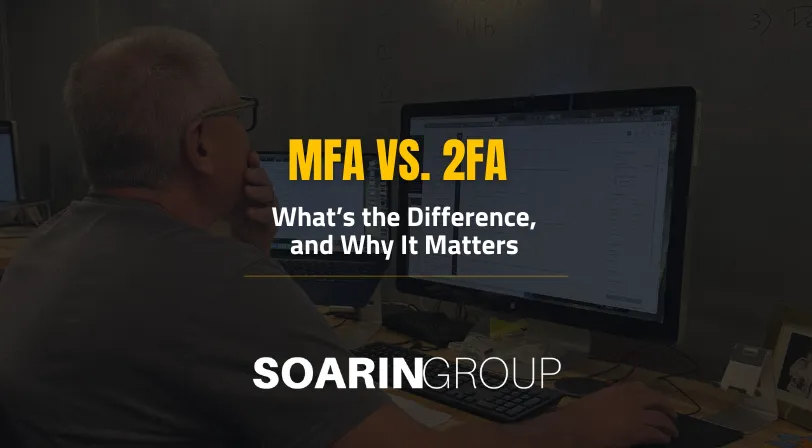
MFA vs. 2FA: What's the difference and why it matters
MFA vs. 2FA: What’s the Difference and Why It Matters
When it comes to protecting your business, strong passwords are no longer enough. Cybercriminals have countless tools to guess, steal, or bypass even the most complex login credentials. That’s where 2FA (Two-Factor Authentication) and MFA (Multi-Factor Authentication) come in.
But what’s the difference? And why does it matter for your business?
What is 2FA?
Two-Factor Authentication (2FA) requires two separate pieces of evidence to confirm your identity before granting access. Usually, it’s a password (something you know) plus one more factor, like:
A code texted to your phone
An email verification link
A code from an authenticator app
Think of 2FA as adding an extra lock on the door, one key isn’t enough to get in.
What is MFA?
Multi-Factor Authentication (MFA) takes it one step further. Instead of just two, it requires two or more different types of factors. These could include:
Something you know (password or PIN)
Something you have (security token, phone, smart card)
Something you are (fingerprint, face scan, voice recognition)
MFA gives businesses flexibility in how security is applied. For example, a financial system might require a password + fingerprint + one-time code for extra protection.
The Key Difference
2FA = exactly two layers of protection
MFA = two or more layers of protection
All 2FA is MFA, but not all MFA is just 2FA.
Why It Matters for Your Business
Passwords get compromised - Phishing attacks, weak passwords, and reused credentials make businesses easy targets.
Remote work increases risk - Employees logging in from personal devices or unsecured networks create more entry points for hackers.
Compliance requirements - Many industries (finance, healthcare, legal) now require MFA for regulatory compliance.
Peace of mind for clients - Showing that your business takes security seriously builds trust.
The Bottom Line
Whether you start with 2FA or adopt full MFA, adding layers of authentication drastically reduces your risk of a data breach. Hackers don’t want to waste time breaking through multiple locks when so many businesses are still leaving the door wide open.
🔑 Tip for business owners: If you’re unsure where to start, enable 2FA on your email and financial accounts immediately. Then, talk with your IT provider about rolling out MFA company-wide for maximum security.
